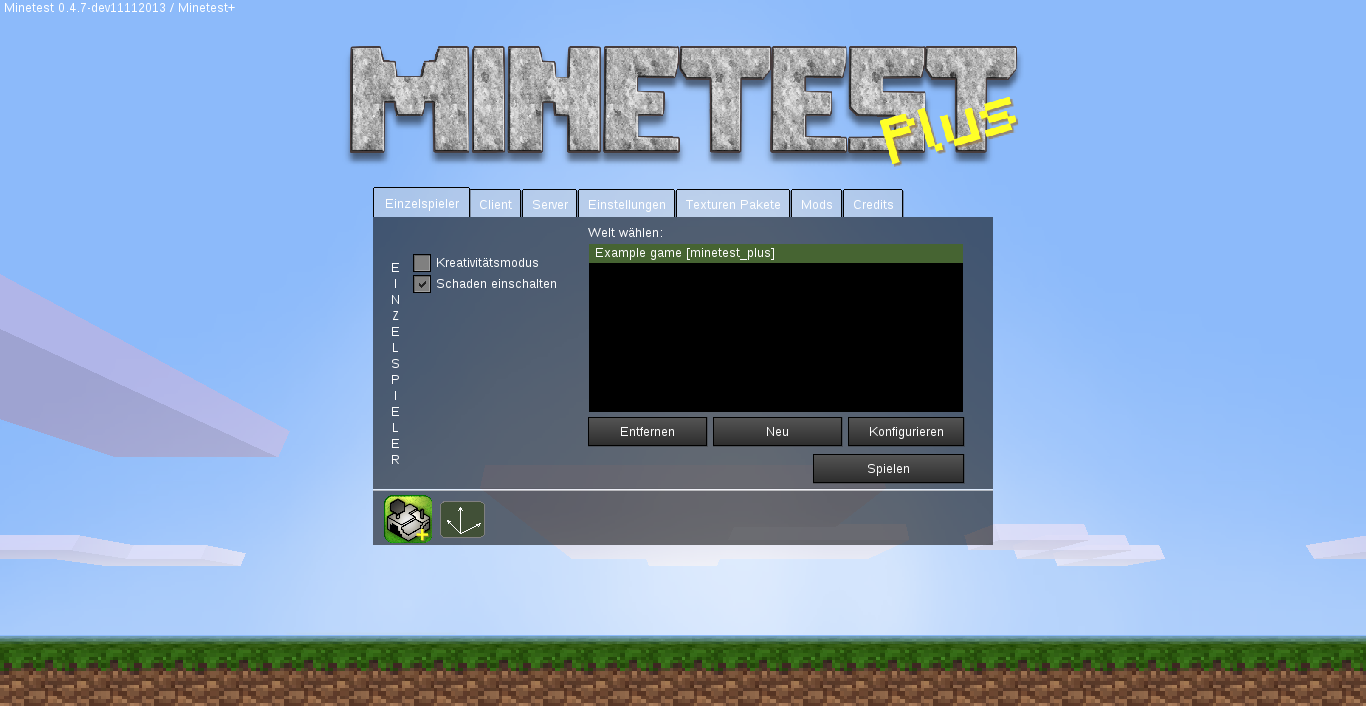

- #MINETEST SET TIME MOD#
- #MINETEST SET TIME MODS#
Randomized spawning typically causes players to spawn far from eachother. If applying retroactively to a server, this will cause existing players to be re-spawned once. KNOWN ISSUE - Any player not yet registered with a spawn point will be given a spawn point anywhere in the world. Moderator players can assign a new random spawn for another player using /playerspawn if they have the spawnadmin privilege.Players can set their spawn point by typing /setspawn if they have the setspawn privelege.Players can request a new spawn point by typing /newspawn if they have the newspawn privilege.Players can allow any other player to visit their spawn - see "Town hosting" below.Players can invite other players to join their spawn - see "Spawn guests" below.

Players can return to their spawn point with the /spawn command if they have spawn privilege.If beds spawning is active, then beds can be used to set players' re-spawn point (they still go to their main spawnpoint on invoking /spawn).Player will respawn at their spawnpoint if they die.New players will not spawn into protected areas.Player is assigned randomized spawnpoint on joining.Players will likely spawn very far from eachother into prisitine areas.
#MINETEST SET TIME MOD#
More thorough intro into Minetest moddingĪn essential resource for any mod author.Randomized Spawning for MinetestĬauses players to receive a spawn point anywhere on the map. Quite a basic intro into Minetest modding,. That I used to learn the language myself. set_node ( pos, b ) end end end References width do p = img : getPixel ( z, x ) h = get_height ( p ) for y = 1, h do pos = minetest. height then local p = img : getPixel ( z, x + 1 ) if is_water ( p ) then return true end end return false end local function generate_blocks ( img ) clean () for x = 1, img. R = 100 end local function get_height ( px ) if is_water ( px ) then return 2 end local b = get_lum ( px ) return math.floor ( b / 10 ) + 3 end local function near_water ( img, z, x ) if z > 1 then local p = img : getPixel ( z - 1, x ) if is_water ( p ) then return true end end if z 1 then local p = img : getPixel ( z, x - 1 ) if is_water ( p ) then return true end end if x < img. Greens: (113, 245, 80), (54, 173, 80), (83, 204, 128).Īs an easily explainable solution (remember, this had to be parseable by anĨ-year-old), I chose this solution: local function is_grass ( px ) return px. Usually different for even nearby green pixels. There’s quite a bit of explanation involved in determining color of a pixel.Īfter all, we see it as green, while the program sees a tuple of numbers, What to do when the color is neither green nor blue? We chose to place stoneīlocks in those places in real examples, those appeared where we darkened the We decided that water should always be at the “sea level”, so we ignoreīrightness of blue pixels and set it to be 2. Places blocks of dirt from 1 to the calculated height, followed by a blockĬhosen depending on the color of the corresponding pixel - water or grass. Gives a nice max hills height of 25 blocks, so there should be a loop that The algorithm is quite simple really: for each pixel of the original image,ĭetermine its color (blue or green) and brightness. Program that my daughter actually wrote herself turned out to be less than 100īy that time, we had mastered loops and tables and the project seemed doable. (painted blue) and grass (painted green). Hand-drawn map, where height is represented by brightness, there’s water We chose this project: a mod that is capable of generating a world out of a #MINETEST SET TIME MODS#
Had large enough community, and mods in Lua

Minetest that appeared to be quite like Minecraft, So instead, I started looking for an open-sourceĪlternative, found a few and decided to use Mod, but that turned out to be hard and borderline illegal due to decompilation Since my daughter liked playing Minecraft, we thought of doing something like a Teaching programming with Lua: a Minetest mod







 0 kommentar(er)
0 kommentar(er)
